INTERNACIONAL
Delegates from Iran, US holding talks in Oman amid ongoing tensions: What to know

Iranian threat escalates ahead of Trump admin discussions
Fox News senior strategic analyst Gen. Jack Keane joins ‘Fox & Friends’ to break down a new report warning that Iran’s pursuit of nuclear weapons has reached an ‘extreme danger’ level as the Trump administration prepares for high-stakes talks.
Delegates from the United States and Iran are holding talks in Oman on Saturday in a delicate effort to restart negotiations over Tehran’s controversial nuclear program.
The talks, between a mediator to Iran’s Foreign Minister Abbas Araghchi and U.S. Mideast envoy Steve Witkoff, come nearly seven years after President Donald Trump unilaterally withdrew the U.S. from Tehran’s nuclear deal with world powers in 2018. Since then, indirect talks between the two adversaries have made zero progress.
Trump has imposed new sanctions on the Islamic Republic as part of his «maximum pressure» campaign and has suggested military action remained a possibility. Despite this, the president has said he still believed a new deal could be reached by writing a letter to Iran’s 85-year-old Supreme Leader Ayatollah Ali Khamenei, which he sent early last month.
Khamenei, meanwhile, has warned that Iran would respond to any U.S.-led attack with an attack of its own.
TRUMP DEMANDS DO-OR-DIE NUCLEAR TALKS WITH IRAN. WHO HAS THE LEVERAGE?
Iran’s Supreme Leader Ayatollah Ali Khamenei and President Donald Trump (Office of the Iranian Supreme Leader/WANA (West Asia News Agency)/Handout via REUTERS/Elizabeth Frantz/File Photo)
«They threaten to commit acts of mischief, but we are not entirely certain that such actions will take place,» the supreme leader said. «We do not consider it highly likely that trouble will come from the outside. However, if it does, they will undoubtedly face a strong retaliatory strike.»
Iranian Foreign Ministry spokesperson Esmail Baghaei called such threats against Iran «a shocking affront to the very essence of International Peace and Security.»
«Violence breeds violence, peace begets peace. The US can choose the course…; and concede to CONSEQUENCES,» he wrote on X.
AHEAD OF TRUMP ADMIN-IRAN TALKS, NEW REPORT SAYS IRAN NUCLEAR THREAT RISES TO ‘EXTREME DANGER’
Iranian President Masoud Pezeshkian has rejected direct negotiations with the United States over Tehran’s nuclear program.
«We don’t avoid talks; it’s the breach of promises that has caused issues for us so far,» Pezeshkian said in televised remarks during a Cabinet meeting. «They must prove that they can build trust.»
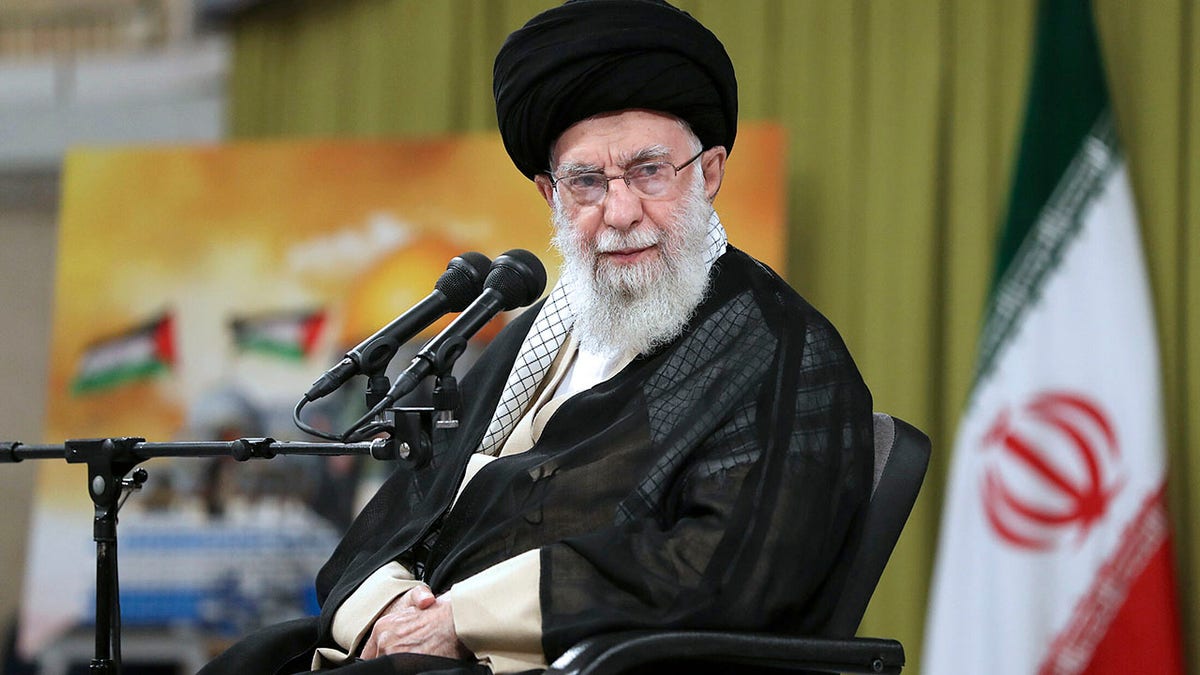
Iranian Supreme Leader Ayatollah Ali Khamenei attends a meeting with a group of students in Tehran, Iran, on Wednesday, Nov. 1. (Office of the Iranian Supreme Leader via AP)
Once allies, both countries have been hostile to one another for nearly half a century, following the 1979 Islamic Revolution that saw the creation of a theocratic government led by Grand Ayatollah Ruhollah Khomeini.
Shah Mohammad Reza Pahlavi, whose rule was cemented in a CIA-led coup in 1953, had fled Iran before the revolution, ill with cancer, as demonstrations swelled against his rule. Late in 1979, university students overran the U.S. Embassy in Tehran, seeking the shah’s extradition and sparking the 444-day hostage crisis that severed diplomatic relations between Iran and the U.S.
TRUMP’S GOT IRAN CORNERED BY FOLLOWING REAGAN’S DOCTRINE
In the decades since, Iran-U.S. relations have see-sawed between enmity and grudging diplomacy, with relations peaking when Tehran made the 2015 nuclear deal with world powers before Trump withdrew from the deal, sparking more tensions in the Mideast that persist today.

FILE – This photo released on Nov. 5, 2019, by the Atomic Energy Organization of Iran shows centrifuge machines in the Natanz uranium enrichment facility in central Iran. (Atomic Energy Organization of Iran via AP, File)
Under the original 2015 nuclear deal, Iran was allowed to enrich uranium up to 3.67% purity and to maintain a uranium stockpile of 661 pounds. The last report by the International Atomic Energy Agency on Iran’s program put its stockpile at 18,286 pounds as it enriches a fraction of it to 60% purity.
U.S. intelligence agencies assess that Iran has yet to begin a weapons program, but has «undertaken activities that better position it to produce a nuclear device, if it chooses to do so.»
CLICK HERE TO GET THE FOX NEWS APP
Iran has insisted for decades that its nuclear program is peaceful. However, its officials increasingly threaten to pursue a nuclear weapon. Iran now enriches uranium to near weapons-grade levels of 60%, the only country in the world without a nuclear weapons program to do so.
The Associated Press contributed to this report.
INTERNACIONAL
Unearthed Mamdani clip reveals how his upbringing made him open to being called ‘radical,’ socialist
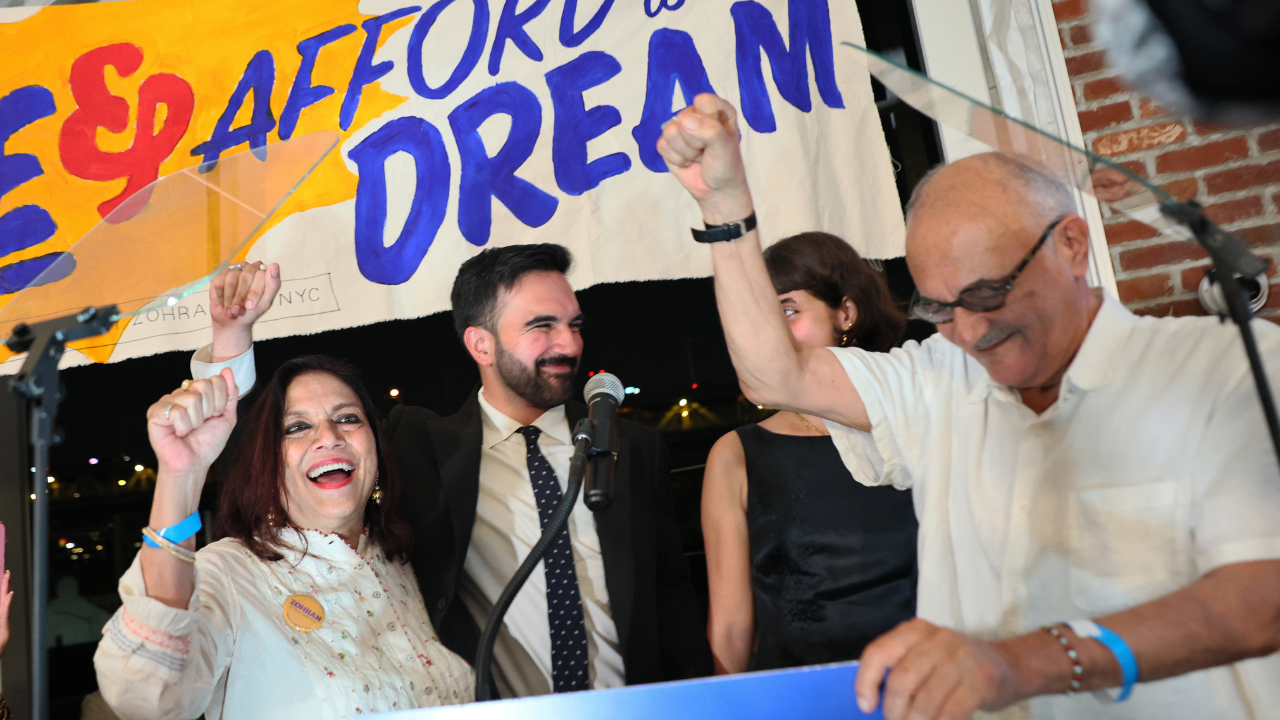
NEWYou can now listen to Fox News articles!
A resurfaced interview by New York City socialist mayoral candidate Zohran Mamdani shows him explaining that the family he grew up in made him «open» to being a «radical» and suggesting that socialism needs to be re-branded.
«I think, honestly, growing up in the family that I grew up in, I was quite open to what would be considered being a radical from a very young age,» Mamdani said on The Far Left Show in 2020.
«I mean, from the beginning, my identities are already considered radical by a lot of mainstream American political thought. So being a Muslim, being an immigrant, these are things that already kind of put you in the box of ‘other.’ And so it’s not that far of a jump because whenever you… stand up to speak up for the rights of others who share the same identity as you, then you’re a radical, right? So often people in this country are considered radicals if they stand up for Palestinian human rights.»
Mamdani has faced criticism over some of his positions taken as a young man, including supporting an academic boycott of Israel and starting a Students for Justice in Palestine chapter during his college days, as well as the past writings of his father, Mahmood Mamdani.
ZOHRAN MAMDANI FIRES BACK AT WHITE HOUSE MISPRONOUNCING HIS NAME: ‘M-A-M-D-A-N-I’
Mamdani explained his ‘radical’ background in a 2020 podcast appearance
Mahmood Mamdani’s social media presence is littered with anti-Israel positions referring to Israelis as «colonial settlers» and celebrating the idea of a «third intifada.» Additionally, Mahmood Mamdani sits on the council of an openly anti-Israel tribunal and once wrote in a book, which he dedicated to his son, that suicide bombers «stigmatized as a mark of barbarism.»
«Zohran Mamdani has built his political brand on the same radical, hate-filled and anti-American ideology his father, Mahmood Mamdani, has spent decades promoting—one that demonizes Jewish people and legitimizes anti-democratic violence,» Brooke Goldstein, a human rights attorney who specializes in antisemitism, told Fox News Digital earlier this month.
«The Jew-hatred the Mamdani family peddles is fundamentally anti-American and violates the core values our country was founded on—tolerance, equality, and liberty. Our nation’s strength lies in its diversity and commitment to protecting minority rights. Antisemitic world views threaten the peace and security of our communities.»
In the interview, the younger Mamdani went on to lament the criticism that Democratic Socialists of America have faced for supporting BDS.
MAMDANI CONFRONTED ON STREETS OF NYC ABOUT ‘COMMUNIST’ LABEL, REFUSES TO ANSWER
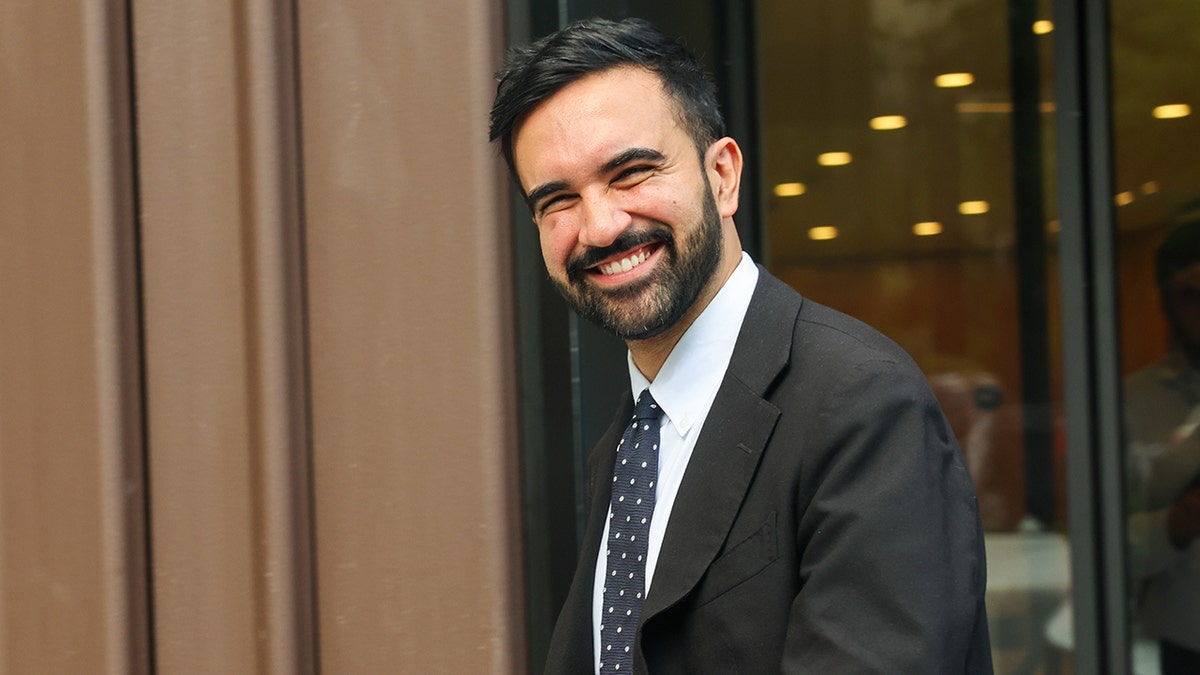
Democratic socialist candidate Zohran Mamdani, who won the Democratic primary for mayor of New York City, attends an endorsement event from the union DC 37 on July 15, 2025, (Spencer Platt/Getty Images)
BDS is described as «an international campaign to delegitimize the State of Israel as the expression of the Jewish people’s right to national self-determination by isolating the country economically through consumer boycotts, business and government withdrawal of investment, and legal sanctions,» according to Influence Watch.
Mamdani also explained in the interview his evolution as a «socialist.»
«I think I’ve been a socialist for quite a while, but I don’t think I understood myself within the terms of that label,» Mamdani said. «And I think that that is something that I not only internalized, but also became comfortable expressing when I became an active member of New York City DSA, which is an organization that I’ve been a member of. I attended my first meeting in early 2017, but I’ve been a much more active member since 2018.»
CLICK HERE TO GET THE FOX NEWS APP
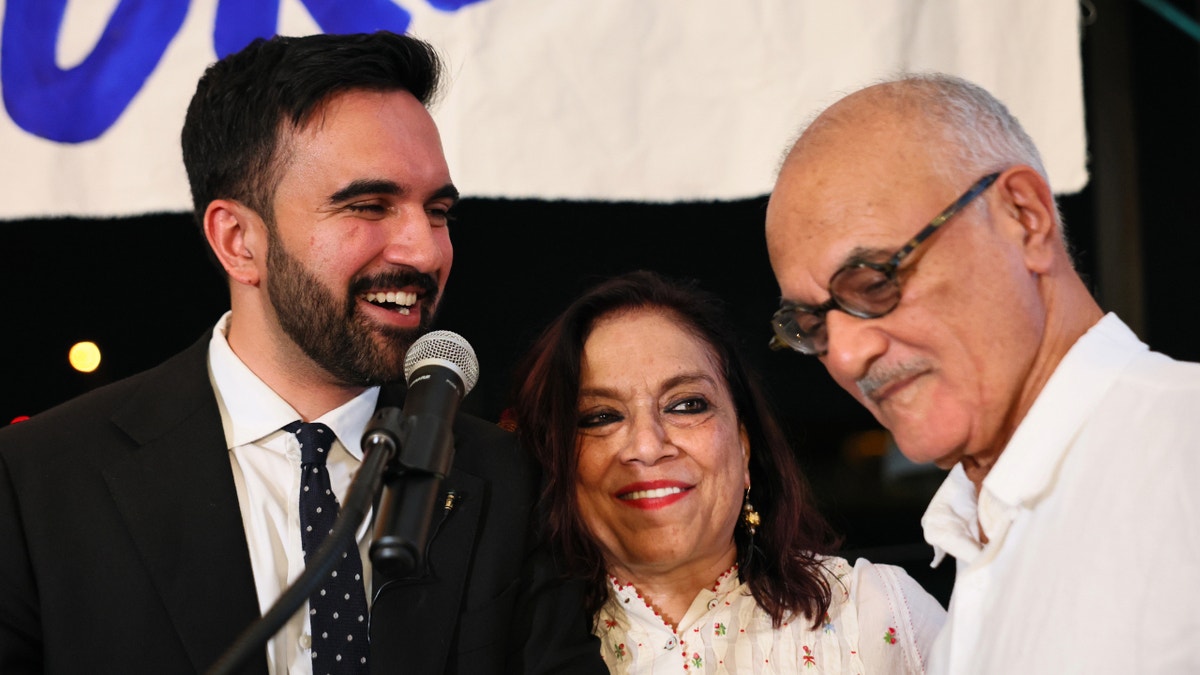
New York mayoral candidate, State Rep. Zohran Mamdani (D-NY) stands with his mother Mira Nair, and father Mahmood Mamdani as they celebrate during an election night gathering at The Greats of Craft LIC on June 24, 2025. (Michael M. Santiago/Getty Images)
Mamdani added that he hopes to rebrand the word socialism to be more appetizing for the general public.
«I think, for me, a lot of times people try and scare you into never embracing the word, and I think that there’s a lot of work that we have to do to change our branding, because socialism in and of itself, the way I understand it, is a fight for the state to provide all that is necessary to live a dignified life for each and every person in our state,» Mamdani explained.
«That is something that when you explain it in that way, and when you talk about the way in which it is applied, when you’re talking about typically housing, healthcare, education, but I would argue we must expand that beyond and talk about public transit and talk about the internet and talk childcare. People are receptive to that.»
Fox News Digital reached out to the Mamdani campaign for comment.
INTERNACIONAL
Taiwán alertó a la UE sobre las amenazas de infiltración impulsadas por el régimen chino para socavar la democracia

El presidente de Taiwán, William Lai, advirtió este martes que su país y la Unión Europea (UE) enfrentan amenazas comunes de interferencia externa, en especial intentos de manipulación electoral, desinformación y ataques a la confianza pública.
Las declaraciones se produjeron durante una reunión con miembros de la Comisión Especial del Parlamento Europeo sobre el Escudo Europeo de la Democracia, de visita en Taipei.
“Ambos se han encontrado con interferencias informativas e infiltraciones de fuerzas externas que han intentado manipular los resultados de las elecciones democráticas, crear confrontación en la sociedad y hacer tambalear la confianza de la gente en la democracia”, afirmó Lai, según un comunicado difundido por su oficina presidencial.
El mandatario taiwanés subrayó que Taiwán y la UE comparten valores fundamentales como la libertad y la democracia, y mantienen relaciones económicas y comerciales estrechas, aunque no tienen lazos diplomáticos formales. Pese a ello, Lai señaló que existe una cooperación creciente frente a riesgos híbridos como los que —según denunció— se originan en China.
La isla ha acusado en repetidas ocasiones a Beijing de desplegar campañas de desinformación, operaciones de influencia y ciberataques con el objetivo de socavar su sistema político. Lai reiteró que Taiwán rechaza las reclamaciones de soberanía de China, país que considera a la isla parte de su territorio y ha intensificado su presión diplomática y militar en los últimos años.
“Taiwán está decidido a trabajar para salvaguardar la democracia, la paz y la prosperidad en todo el mundo, y espera compartir su experiencia con Europa”, añadió el presidente taiwanés, al tiempo que agradeció el respaldo expresado por instituciones europeas ante las amenazas sobre el Estrecho.
En paralelo a la visita de la delegación europea, el Ministerio de Relaciones Exteriores de Taiwán (MOFA) valoró como “sincero y significativo” el apoyo expresado por Bruselas. El pronunciamiento del MOFA fue en respuesta a las conclusiones del 13.º Diálogo Estratégico UE-China, celebrado el 2 de julio en Bruselas y copresidido por la vicepresidenta de la Comisión Europea, Kaja Kallas.
Durante ese encuentro, la diplomática europea reiteró su rechazo a cualquier intento unilateral de modificar el statu quo en el Estrecho de Taiwán, en especial a través de fuerza militar o coerción, según el comunicado oficial. Kallas también manifestó preocupación por la situación de los derechos humanos en China y por las amenazas híbridas provenientes de Beijing, que afectan tanto a Europa como a la región del Indopacífico.
Además, el MOFA recordó que el Servicio Europeo de Acción Exterior (SEAE) ha emitido varios comunicados en respuesta a tres ejercicios militares a gran escala realizados por China desde mayo, los cuales incluyeron simulacros de bloqueo marítimo y ataques coordinados alrededor de la isla. Esos comunicados subrayaron la importancia de mantener la paz y la estabilidad en el Estrecho como elemento clave para la seguridad regional y global.
“La UE tiene un interés directo en mantener el statu quo en el Estrecho de Taiwán”, afirmó el MOFA en su declaración. El ministerio también aseguró que Taiwán continuará fortaleciendo la cooperación con Bruselas y otros aliados democráticos para proteger el orden internacional basado en normas, y para enfrentar las amenazas comunes que afectan a regímenes democráticos.
China ha rechazado todas las acusaciones de interferencia y sostiene que Taiwán busca apoyo extranjero para impulsar una agenda separatista. A pesar de ello, tanto Taiwán como la UE han intensificado en los últimos años los canales de comunicación informal, especialmente en áreas de comercio, tecnología, ciberseguridad y defensa de los valores democráticos.
(Con información de Reuters)
Asia / Pacific,TAIPEI
INTERNACIONAL
Trump invokes Russia collusion hoax while calling for longtime foe Schiff to face jail time
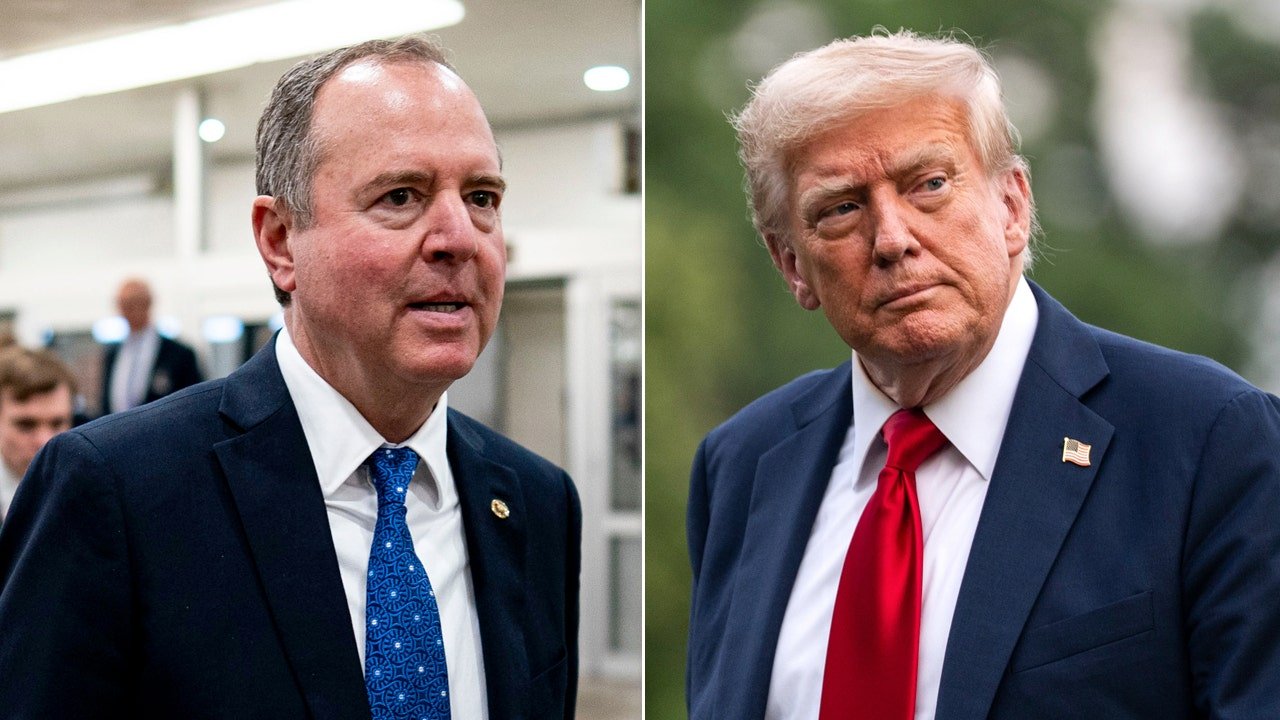
NEWYou can now listen to Fox News articles!
President Donald Trump called for California Democrat Sen. Adam Schiff to face jail time while invoking recently declassified documents alleging Obama administration officials «manufactured and politicized intelligence» to create the narrative that Russia was attempting to influence the 2016 presidential election.
«Adam ‘Shifty’ Schiff is in BIG TROUBLE!» Trump posted to Truth Social Sunday evening. «He falsified Loan Documents. He once said my son would go to prison on a SCAM that Schiff, along with other Crooked Dems, illegally ‘manufactured’ in order to stage an actual coup.»
«My son did nothing wrong, knew nothing about the fictional story,» he added. «It was an American Tragedy! Now Shifty should pay the price of prison for a real crime, not one made up by the corrupt accusers!»
Schiff is under scrutiny after the U.S. Federal Housing Finance Agency (FHFA) sent a letter to the Department of Justice in May sounding the alarm that in «multiple instances,» Schiff allegedly «falsified bank documents and property records to acquire more favorable loan terms, impacting payments from 2003-2019 for a Potomac, Maryland-based property.»
FEDERAL HOUSING OFFICIAL SUBMITTED SCHIFF CRIMINAL REFERRAL TO DOJ OVER MORTGAGE DOCUMENTS
President Donald Trump highlighted 2024 allegations of mortgage fraud against Sen. Adam Schiff, left — claims that Schiff has denied. (Getty Images)
FHFA is an independent federal agency that oversees Fannie Mae, Freddie Mac and the Federal Home Loan Bank System.
Schiff’s office did not respond to Fox News Digital’s request for comment Monday morning.
Trump publicly lambasted Schiff Tuesday over the alleged mortgage fraud, while Fannie Mae’s financial crimes investigations concluded last week in a letter to the FHFA that Schiff allegedly engaged in «a sustained pattern of possible occupancy misrepresentation» on five Fannie Mae loans, Fox News Digital previously reported.
«I have always suspected Shifty Adam Schiff was a scam artist,» Trump posted to Truth Social Tuesday. «And now I learn that Fannie Mae’s Financial Crimes Division have concluded that Adam Schiff has engaged in a sustained pattern of possible Mortgage Fraud.»
«Adam Schiff said that his primary residence was in MARYLAND to get a cheaper mortgage and rip off America, when he must LIVE in CALIFORNIA because he was a Congressman from CALIFORNIA. I always knew Adam Schiff was a Crook. The FRAUD began with the refinance of his Maryland property on February 6, 2009, and continued through multiple transactions until the Maryland property was correctly designated as a second home on October 13, 2020.»
Schiff has passed off the allegations as a continuation of Trump’s history of slamming the liberal lawmaker.
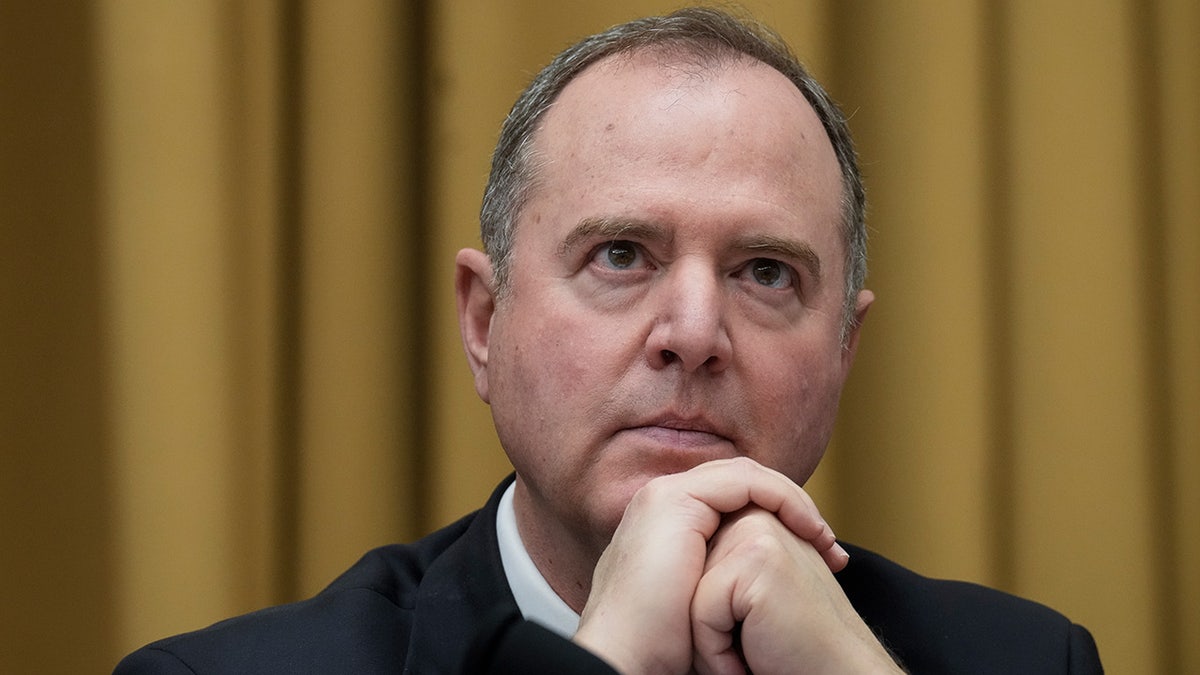
Sen. Adam Schiff is facing scrutiny over his home mortgages in California and Maryland. (Drew Angerer/Getty Images)
«Since I led his first impeachment, Trump has repeatedly called for me to be arrested for treason,» Schiff posted to X earlier in July after Trump first accused Schiff of mortgage fraud. «So in a way, I guess this is a bit of a letdown. And this baseless attempt at political retribution won’t stop me from holding him accountable. Not by a long shot.»
WATCH: ADAM SCHIFF SILENT AFTER TRUMP ACCUSED HIM OF MORTGAGE FRAUD
Trump and Schiff have long been political foes, which was underscored during Trump’s first administration when Schiff served as the lead House manager during the first impeachment trial against Trump in 2020, and when Schiff repeatedly promoted claims that Trump’s 2016 campaign colluded with Russia.
Days after Trump first posted about Schiff’s mortgages in Maryland and California, the president’s Director of National Intelligence Tulsi Gabbard declassified documents that reportedly show «overwhelming evidence» that then-President Barack Obama and his national security team laid the groundwork for what would be the yearslong Trump–Russia collusion probe after Trump’s election win against former Secretary of State Hillary Clinton in 2016.
«It lays out, these over 100 documents that you’re referencing, that I declassified and released, spells out in great detail exactly what happens when you have some of the most powerful people in our country directly leading at the helm, President Obama and his senior-most national security cabinet, James Comey, John Brennan, James Clapper, and Susan Rice and others, essentially making a very intentional decision to create this manufactured, politicized piece of intelligence with the objective of subverting the will of the American people,» Gabbard told Fox News’ Sean Hannity Friday evening.
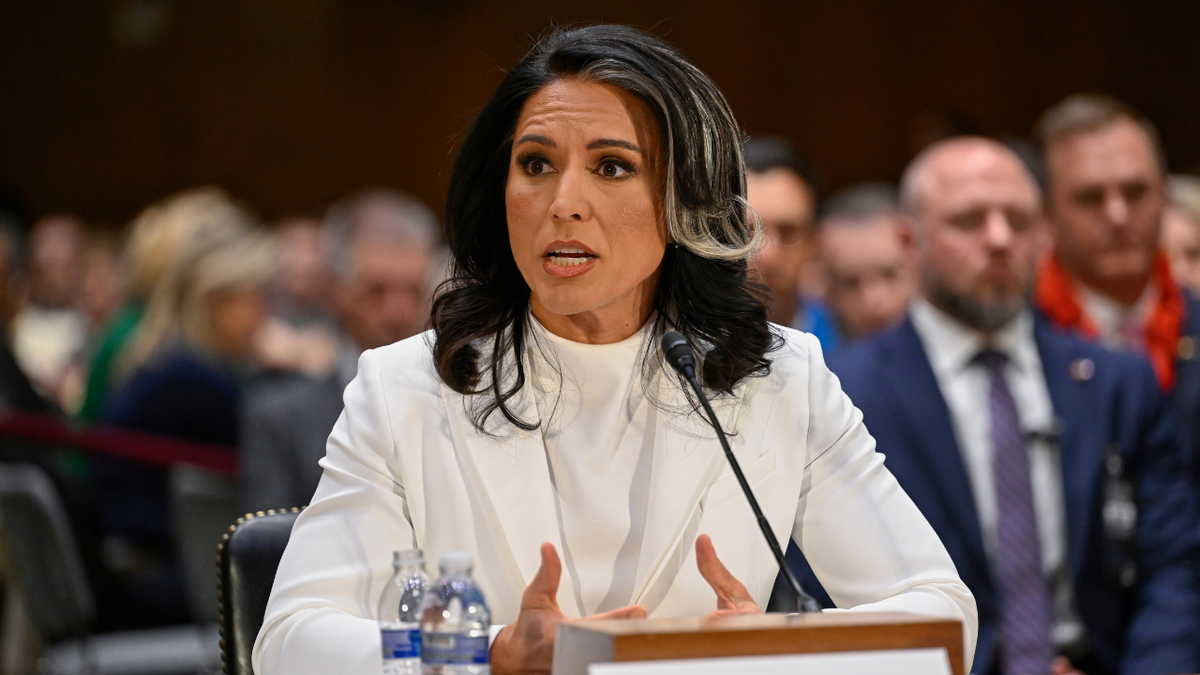
Tulsi Gabbard declassified documents that reportedly show «overwhelming evidence» that then-President Barack Obama and his national security team laid the groundwork for what would be the yearslong Trump–Russia collusion probe. (John McDonnell/The Associated Press)
TRUMP ACCUSES ‘SCAM ARTIST’ SCHIFF OF LYING ABOUT MARYLAND HOME TO COMMIT MORTGAGE FRAUD
She argued that the goal of Obama and his team was to essentially «not accept the decision of the American people» in 2016, and to use this «manufactured, politicized piece of intelligence» as a means to enact a «years-long coup against President Trump.»
Schiff was an incredibly vocal lawmaker amid the Russian collusion claims, most notably when the House censured him in 2023 over his promotion that Trump’s 2016 campaign colluded with Russia. Schiff served in the House representing California from 2001 to 2024, when he was sworn-in as a senator after his successful 2024 campaign to serve in the nation’s upper chamber.
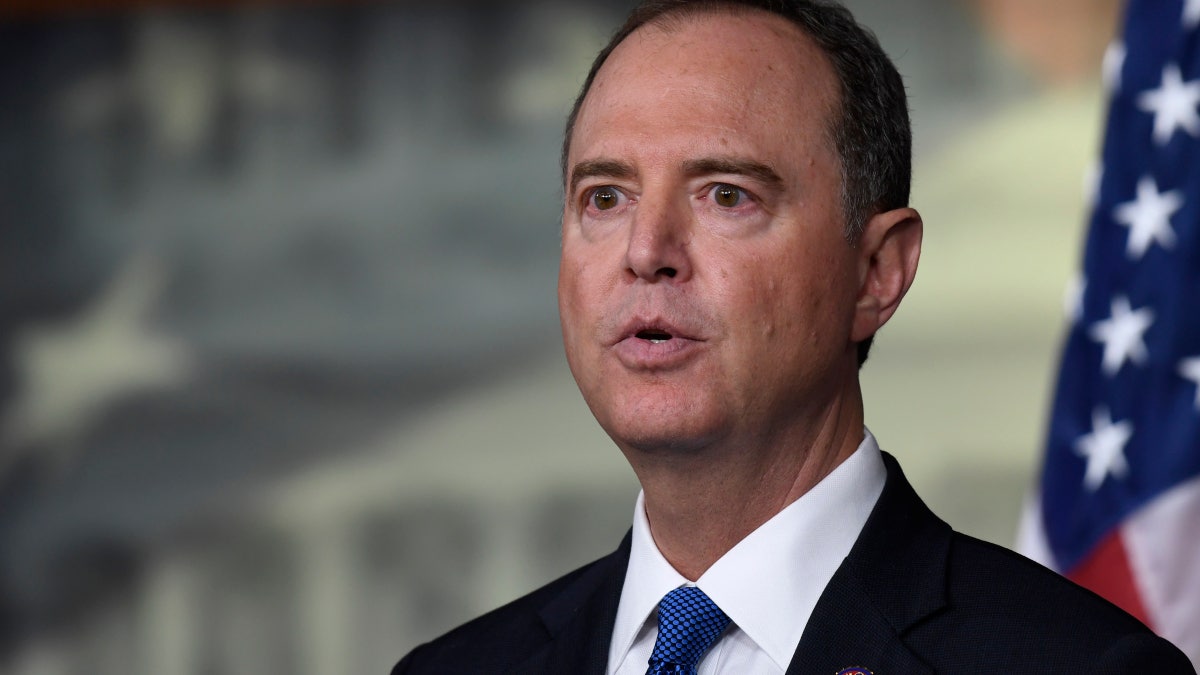
Sen. Schiff was a vocal lawmaker who promoted the narrative that the 2016 Trump campaign colluded with Russia. (Susan Walsh/The Associated Press)
CLICK HERE TO GET THE FOX NEWS APP
Schiff served as the ranking member of the House intelligence committee from 2015 to 2019, before becoming the committee’s chair from 2019 to 2023. In that role, Schiff was kept up to date on classified materials surrounding the Russian collusion claims.
Schiff advocated in 2018 that Donald Trump Jr., the president’s son, face a subpoena amid Special Counsel Robert Mueller’s investigation into claims Trump’s 2016 campaign colluded with Russia to secure the election, which Trump cited in his latest Truth Social aimed at Schiff. Mueller’s investigation, which wrapped up in March 2019, into the Russia claims determined there was no evidence of collusion between the Trump campaign and Russia.

 POLITICA2 días ago
POLITICA2 días agoJuan Carlos Maqueda defendió la condena contra Cristina Kirchner: “Hay una sensación de que se hizo Justicia y que no hay impunidad”

 POLITICA2 días ago
POLITICA2 días agoExpulsada del Gobierno, Victoria Villarruel empieza a tomar distancia, pero no tiene proyecto político para este año

 POLITICA1 día ago
POLITICA1 día agoLa CGT evalúa adelantar a octubre el recambio de sus autoridades y define una movilización contra Milei






















